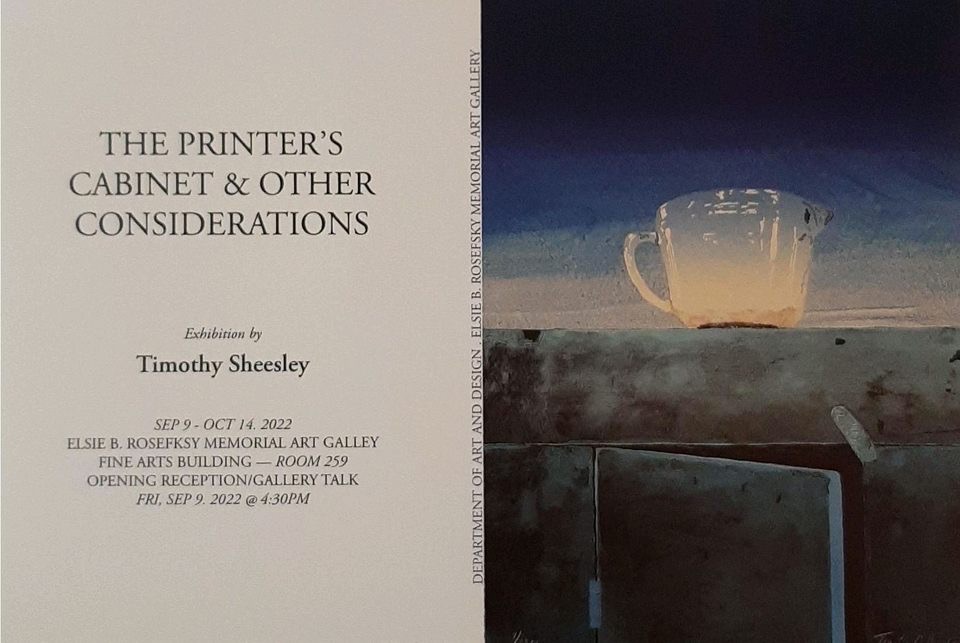Binghamton University’s department of art and design welcomed artist Timothy Sheesley last week, showcasing his collection, “The Printer’s Cabinet & Other Considerations.”
Sheesley is the owner and master printer of Corridor Press LLC, a lithography studio in Otego, New York. Recently Sheesley retired from the position of gallery director at SUNY Oneonta. He has taught printmaking at many universities, some of which include Temple University, the University of the Arts in Philadelphia and SUNY Oneonta.
His career has been fruitful, having had the opportunities to show his work across the country and internationally. He also had the opportunity to collaborate with professional and well-known artists, such as Art Spiegelman, the author of “Maus.”
Sheesley began his artistic studies in abstraction and formalism, which evolved into the simple style he uses today. During his talk, Sheesley debated this line of creation, questioning what makes something “art.”
The exhibition was mostly composed of simple lithographs, created between 1995 and 2022, and many contained a cabinet — in tune with the theme of the exhibition. The works shown included animal paintings and patterns. Sheesley attributed it to how many promises can come from cabinets and other simple objects of everyday life. The intention is to bring focus and reflection to the universality of these simple objects.
In his talk, Sheesley spoke of his inspiration behind the works, and how simplicity is beautiful.
“I kind of see everything as special,” Sheesley said. “It’s not really a cop-out. When you are creating these things, you are taken along. It pulls you in. You quickly learn what you can’t do.”
The process of creation is important to Sheesley, and discovery has led him to continue creating.
“This is all about drawing, [and] there’s drawing in all of these,” Sheesley said. “I just wanted to work on a group of images and make them obstere, simple and clear.”
In a Q&A, Sheesley was asked about what happens when a piece doesn’t come together. Sheesley explained how to move along in the process of creation.
“When [the project] is done, it’s done,” Sheesley said, “When I have to rework it, I just start over, and sometimes you don’t see what you’ve made until you take some time for it.”
Many BU art students came to the exhibition to enjoy Sheesley’s work in printmaking. Some students, like Vincent Wu, a senior majoring in art history, were asked to visit the exhibition for an advanced drawing class.
“Previously I took this class, and we had an exhibition like this,” Wu said. “But for most of the work, we had more figures and sculptures to work with. But this is all painting, which is great too. It’s different. I think it’s really nice. There is a wide variety of things.”
Wu discussed why seeing an exhibition from professional artists is important for an art student.
“I feel like it’s really important for [Sheesley] to show what he has to offer and his perspective,” Wu said. “Maybe he has a different background from other artists that came before him. Overall, every artist has their own take and it’s important that we learn about each artist.”
Emily O’Brien, a senior majoring in drawing, reflected on her own studies at BU.
“Well, I’m taking an etching class as of right now, so this whole medium itself is very inspiring,“ O’Brien said. “As somebody that is new to it, it shows the diversity of what can be done.”
O’Brien said it is meaningful to have professionals come into the University and showcase their work to the students.
“I think the most obvious reason is to be able to diversify the mediums and subject matter,” O’Brien said, “To have multiple [artists] helps diversify the field.”



